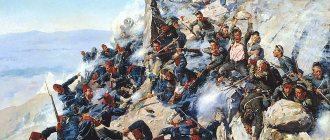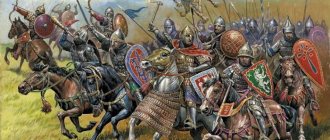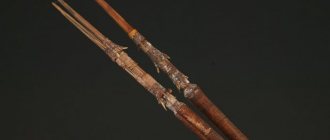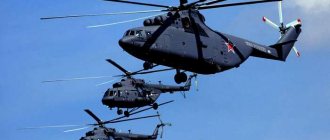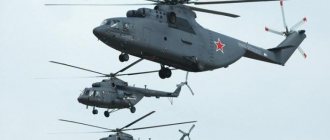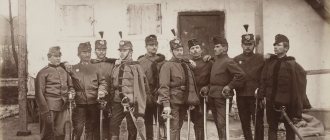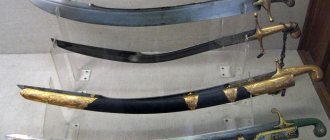History of the military of the Ottoman Empire
| Part series O |
| Military of the Ottoman Empire |
| Classical army (1451–1826) Kapıkulu (Janissaries · Six Cavalry Sections |
| Reform period Nizam-i Jedid · Sekban-i Jedid |
| Modern Army (1861–1922) Modern army |
| naval Imperial Arsenal · Ships |
| Aviation Vesiay Herkus Ahmet Ali Çelikten |
Conflicts
|
| Military service |
|
History of the armed forces of the Ottoman Empire
can be divided into five main periods.
[ according to whom?
] The Founding Era covers the years between 1300 (Byzantine Expedition) and 1453 (Conquest of Constantinople), the Classical Period covers the years between 1451 (second enthronement of Sultan Mehmed II) and 1606 (Peace of Zsitvatorok), the Reformation period covers the years between 1606 and 1826 (Vaka-i Hayriye), the period of modernization covers the years between 1826 [
how?
] and 1858, and the period of decline covers the years between 1861 (the accession of Sultan Abdulaziz) and 1918 (the Truce of Mudros).
[ citation needed
]
CONTENT
- 1 Army 1.1 Founding period (1300–1453)
- 1.2 Classical army (1451–1606)
- 1.3 Reform of the classical army (1606–1826)
- 1.4 Efforts to create a new system (1826–1858)
- 1.5 Modern army (1861–1918)
- 4.1 Recruitment
- 4.3.1 Classic army
Structure
The Janissary corps consisted of ojaks (regiments). The regiment was divided into orts. There were approximately a thousand soldiers in the regiment. The number of Ojaks in different periods of the history of the empire was not the same. But during the heyday of the empire, their number reached almost 200. The regiments were not the same, they had different functions.
The regiment consisted of only three parts.
- Belyuk - the Sultan's personal guard, consisting of 61 ortas.
- Jemaat - simple warriors (the Sultan himself was recorded here), included 101 Ortu.
- Sekban – 34 orts.
The head of all these regiments was the Sultan, but the actual control was carried out by the Aga. The main people close to him were sekbanbashi and kul kyahyas - the highest officers of the corps. The adherents of the Bektash dervish order were regimental priests for the Janissaries, the main of whom were considered to be the ojak imams. The training units and garrison of Istanbul were controlled by the Istanbul Agasi. And talimkhanedzhibashi was responsible for teaching work with boys. There was also a chief treasurer - beytyulmaldzhi.
The regiments also had different ranks, and there were quite a lot of them. So, for example, there was a person responsible for preparing soup, for water, the head of the barracks, the chief cook, his assistants, and so on.
Fleet[edit]
Main article: Ottoman fleet
Ottoman Navy, also known as the Ottoman Navy
, was created in the early 14th century, after the empire first expanded to the sea in 1323, capturing Karamürsel, the site of the first Ottoman naval dockyard and the core of the future navy. During its long existence, it participated in many conflicts and signed a number of maritime treaties. At its peak, the fleet extended to the Indian Ocean, sending an expedition to Indonesia in 1565.
For most of its history, the navy was led by Kapudan Pasha (Grand Admiral; literally "Captain Pasha"). This position was abolished in 1867, when it was replaced by the Minister of Navy (Turkish: Bahriye Nazırı) and a number of naval commanders (Turkish: Donanma Komutanları).
After the collapse of the Ottoman Empire, the naval tradition was continued under the Turkish Navy in the Republic of Turkey in 1923.
Ottoman fleet
Battle of Zonchio in 1499.
Mahmoudiyeh, 1829
Silhouettes of warships of the Ottoman Navy according to the 1914 project.
Special troops
Several Turkish units were trained under the mountain rifleman program under the guidance of German and Austro-Hungarian instructors in Galicia in 1916. However, their role turned out to be insignificant. In 1917, several groups were selected to form assault groups and operate jointly with the Germans. They were formed into several companies and equipped with German-made steel helmets, painted light brown or green. The soldiers of the assault companies wore armbands with the divisional emblem. They were armed with grenades, knives and rifles. Turkish assault companies fought in Palestine and Syria in 1917–1918. and suffered heavy losses.
Private assault squad, Palestine, 1917. The Turkish army formed several assault squads following the German example. The soldiers in them wore German helmets and were armed with German-made Mauser rifles. Units were deployed in Palestine and in 1918 in smaller numbers in the Caucasus. The soldier has grenades in his bag under his arm.
Aviation [edit]
Main article: Ottoman air squadrons
The Ottoman Aviation Asa were the military aviation units of the Ottoman Army and Navy. [25] The history of Ottoman military aviation dates back to June 1909 or July 1911, depending on whether the actual designation as an institution was accepted. The organization is sometimes called the Ottoman Air Force. According to Edward J. Erickson, the term "Ottoman Air Force" itself is a gross exaggeration, and the term "Osmanli Hawa Kuvvetleri" (Ottoman Air Force) is unfortunately often repeated in modern Turkish sources. [26] The fleet's strength peaked in December 1916, when Ottoman air squadrons consisted of 90 aircraft. The aviation squadrons were reorganized into the "General Inspectorate of the Air Force" ( Kuva-yı Havaiye Müfettiş-i Umumiliği
) July 29, 1918. With the signing of the Armistice of Mudros on October 30, 1918, Ottoman military aviation actually returned to normal. end. At the time of the armistice, there were approximately 100 pilots in the Ottoman military aviation; 17 land-based aircraft manufacturing companies (4 aircraft each); and 3 seaplanes of the company (4 aircraft each); only 80 aircraft.
Ottoman air squadrons
Yesilkoy Air Base 1911
Pilots, 1912
Balkan Wars
Don't dust infantry
The role of the infantryman at that time was difficult to underestimate. This was a “pro” who had to wield both a sword and a bow, quickly climb the walls of fortifications, maintain formation and consolidate victory in the event of a successful cavalry attack, and in the event of an enemy attack, on the contrary, defend steadfastly. At the same time, he could only rely on himself and on the shoulder of a comrade standing next to him; there was no horse under him and he could not quickly retreat from the battlefield. This is the only way - victory or death.
What was Alaeddin Pasha's idea? For all its cynicism, by human standards, as a political solution it was brilliant and solved two key issues of Ottoman expansion at once.
It consisted of removing young men aged 12 to 16 years from Christian families located in the occupied territories and raising them as warriors, but not just warriors, but professional warriors of Islam, completely devoted to the Sultan and fighters against the “infidels.”
Gentile Bellini “Janissary Officer” Drawing from the late 15th century
Thus, firstly, the number of Christians in the occupied lands naturally decreased, the best representatives of the gene pool were taken: Greeks, Armenians, Bulgarians, Serbs, Bosnians, Albanians, Georgians, converted to Islam and prohibited from creating families, until 1566.
Secondly, the Ottoman army was replenished with regular, well-trained and completely loyal infantry to the Sultan personally. And, again, representatives of Christian peoples died, since the survivability of an infantryman in war was not high at all times.
The practice of recruiting Janissary corps under Orhan I Ghazi, initially from captured Christian soldiers, was completely perfected under his son Murad I and his troops began to be regularly replenished with professional infantry.
Janissary Soldier
Personnel[edit]
Battle of Mohács in 1526, Ottoman miniature
Set[edit]
Main article: Conscription in the Ottoman Empire
In 1389, the Ottomans introduced a conscription system. If necessary, each city, neighborhood and village had to provide a fully equipped conscript to the military registration and enlistment office. New force of irregular infantry called Azabs
, have been used in a variety of ways. They supported the supply of the front, dug roads and built bridges. On rare occasions, they were used as cannon fodder to slow the enemy's advance. A branch of the Azabs were the Bashibazouks (başıbozuk). They specialized in close combat and were sometimes mounted. Recruited from the homeless, vagabonds and criminals, they became notorious for their undisciplined brutality. [27]
Training[edit]
Ottoman War College[edit]
The Ottoman Military College in Istanbul is a two-year military personnel college of the Ottoman Empire, which aims to educate staff officers for the Ottoman army.
Ottoman Military Academy[edit]
Marshal Ahmed Fevzi Pasha, together with Mehmed Namık Pasha, formed an Academy in 1834 under the name Mekteb-i Harbiye (Ottoman Turkish: lit. "Military School"), and the first class of officers graduated in 1841. reforms in the Ottoman Empire, which recognized the need for more educated officers to modernize its army. The need for a new military order was part of the reforms of Sultan Mahmud II (r. 1808-1839), continued by his son Abdulmecit I (r. 1839-1861).
After the collapse of the Ottoman Empire, the school was renamed the Turkish Military Academy under the Turkish Republic.
Imperial Naval Engineering School[edit]
The history of the Naval Academy dates back to 1773, when the Grand Vizier of Sultan Mustafa III and Admiral Cezayirli Gazi Hasan Pasha founded a naval school called "Naval Engineering at the Golden Horn Naval Dockyard". François Baron de Tott, a French officer and advisor to the Ottoman military, was appointed to create a training course in aircraft geometry and navigation. The course, which also included civilian captains from the merchant navy, took place on board a galleon anchored at Kasimpasa in Istanbul and lasted three months. The temporary course became a continuing education on land with the creation of the "Naval Mathematical School" in February 1776. As the number of cadets grew, the school building at the naval shipyard was expanded. On 22 October 1784, the college, renamed the "Imperial Naval Engineering School" (Ottoman Turkish: Mühendishâne-i Bahrî-i Hümâyn), began its three-year courses in the new building. From 1795, training was divided into navigation and cartography for deck officers and into naval architecture and shipbuilding for naval engineers. In 1838, the naval school moved to a new building in Kasimpasa. With the beginning (1839) of reform efforts, the school was renamed the "Naval School" (Ottoman Turkish: Mekteb-i Bahriye) and continued to operate in Kasimpaşa for 12 years. Then in 1850 it was moved for the last time to Heybeliada. During the Second Constitutional Era, a revamped education system was adapted in 1909 from the Royal Naval Academy.
After the collapse of the Ottoman Empire, the school was renamed the Naval Academy (Turkey) under the Turkish Republic.
Ranks [edit]
Classic army[edit]
- Agas commanded various types of military service, for example: “azap aga”, “besli aga”, “janissaries aga”, respectively for the commanders of azaps, beslis and janissaries. This designation was also given to commanders of smaller military units, such as "bölük-aga" and "okak aga", commanders of "bölük" (company) and "okaka" (troops) respectively.
- Boluk-bashi was the commander of the "byoluk", which corresponded to the rank of captain.
- Çorbácı (Turkish for "waitress") was the commander of an orta (regiment), roughly corresponding to the rank of colonel (Turkish: Albay) today. In navigation, the term was used to refer to the chief of a ship's crew, a role similar to that of a boatswain.
Modern army[edit]
Insignia of officers in the army.
The system of ranks and insignia followed the patterns of the German Empire. [28]
- Nefer (private)
- Onbashi (corporal)
- Cavus (Sergeant)
- Baščavuš (Sergeant Major)
- Mülazım-ı Sani (junior lieutenant)
- Mülazım-ı Evvel (senior lieutenant)
- Yuzbashi (captain)
- Kolagasi (senior captain or adjutant major)
- Binbashi (Major)
- Kaymakam (Lieutenant Colonel)
- Miralay (colonel) - regiment commander (alai)
- Mirliva - brigade commander (liwa)
- Ferik - division commander (company)
- Birinci Ferik - corps commander (Kolordu)
- Mushir (field marshal) - commander of the army (Ordu)
Army of the Ottoman Empire
Throughout its history it was one of the main elements of Ottoman power. Three main stages of its evolution can be distinguished.
— From the XIV to the XVI centuries. this is a powerful army. The sultans created an army completely connected with the personality of the monarch, relying on local beys, quite powerful, but playing only the role of “border lords” (uj bey-leri), who were charged with waging a “holy war” on the approaches to the empire.
The widespread use of artillery on the battlefield, the combat effectiveness of the infantry, especially the Janissaries, and the judicious use of cavalry - all these factors ensure the superiority of the Ottoman Empire over its opponents.
In the 17th century The army is in a state of crisis. There are no more conquests, which means there is no booty and less income, and meanwhile it is necessary to support increasingly numerous troops (48,000 people in 1595, 85,000 in 1652).
Some military units, especially the Janissaries, were unable to adapt to the technical and tactical progress of the armed forces of the European enemy, while they themselves lost their former valor. They have become an ineffective and arrogant militia, jealous defenders of their legal and fiscal integrity. In order to counter the successive dangers, the government is forced to demobilize military and paramilitary (people's militia) units and recruit mercenaries, who must not only be maintained, but also controlled.
Being in incomparably worse conditions than the former government troops, discharged without pay as soon as the danger had passed, these new troops are prone to mutiny and are a mass that can be manipulated by exiled military leaders and adventurers of all stripes.
In the 18th century the issue of army reform, its modernization and equipment, weapons, as well as the issue of command of the armed forces, becomes key for the empire. Sultans begin to call for Western instructors, such as the Comte de Bonneval in 1731.
or Baron Tott in 1773. But every action in this direction is very risky, since the old troops of the Porte feel the danger and resist fiercely. There is only one way out: destroy them. In June 1826, the last rebellion was suppressed, the Janissaries were arrested, executed, and their corps was officially abolished.
Until the liquidation of the Janissary corps in 1826.
The Ottoman Empire has mainly two types of troops: “slaves of the Porte” (kapikulars); provincial troops.
“Slaves of Porta” (Kapy Kulari)
This main part of the Ottoman army was a permanent militia unit, recruited within the framework of the devşirme and receiving salaries from the state treasury. The overwhelming majority of troops are stationed in the capital, near the Sultan's palace. They are famous for their discipline (in the beginning, military personnel could not even marry), absolute devotion and fighting spirit.
a) Corps of Janissaries, Yepiceri.
It represented the largest portion of the "slaves of the Porte" and consisted of three divisions (yaya, dje-maat, sekbap), divided into 135 companies called orta.
The corps was commanded by the powerful Aga Janissaries, reporting directly to the Sultan. He is surrounded by numerous officers who make up his divan.
Under Mehmed II there were approximately 6,000 Janissaries, under Suleyman the Magnificent - 12,000, at the end of the 16th century. - 35,000. Until the 17th century. they represent the empire's greatest fighting force. When the Janissaries are not participating in campaigns, they must protect the security of strategic objects of the empire.
Strength [edit]
Strength of the Ottoman Army, 1299–1826
| Year | Yaya and Musellem | Azab | Akıncı | Timarli Sipahi | (Total) Timarli Sipahi and Chebelu | Janissary | Kapikulu Sipahi | Other Kapikulu | (Total) Kapikulu | Fortress Guardians, Martalos and the Fleet | Sekban | Nizam-i Jedid | Overall strength of the Ottoman army |
| 1350 | 1000 ots. | 1000 ots. | 3,500 est. | 200 ots. | 500 ots. | — | — | — | — | — | — | — | 6000 ev. |
| 1389 | 4000 ev. | 8000 ev. | 10,000 est. | 5000 ev. | 10,000 est. | 500 ots. | 250 ev. | 250 ev. | 1000 ots. | 4000 ev. | — | — | 37000 est. |
| 1402 | 8000 ev. | 15,000 est. | 10,000 est. | 20000 est. | 40,000 est. | 1000 ots. | 500 ots. | 500 ots. | 2000 est. | 6000 ev. | — | — | 81,000 est. |
| 1453 | 8000 ev. | 15,000 est. | 10,000 est. | 20000 est. | 40,000 est. | 6,000 [29] | 2000 est. | 4000 ev. | 12,000 est. | 9000 ev. | — | — | 94,000 est. |
| 1528 | 8 180 [30] | 20000 est. | 12 000 [30] | 37 741 [30] | 80,000 est. | 12,000 est. | 5000 ev. | 7000 ev. | 24 146 [30] | 23 017 [30] | — | — | 105,084 – 167,343 est. |
| 1574 | 8000 ev. | 20000 est. | 15,000 est. | 40,000 est. | 90,000 est. | 13 599 [31] | 5,957 [31] | 9 619 [31] | 29 175 [31] | 30,000 est. | — | — | 192,175 est. |
| 1607/ 1609 By | [1] | [2] | [3] | 44,404 (1607) [32] 50,000 est. (1609) | 105 339 (1607) [32] 137 000 (1609) [33] | 37 627 (1609) [34] | 20 869 (1609) [31] | 17 372 (1609) [31] | 75 868 (1609) [31] | 25000 est. | 10,000 est. | — | 196,207–247,868 est. |
| 1670 | [1] | [2] | [3] | 22,000 est. | 50,000 est. | 39 470 [31] | 14 070 [31] | 16 756 [31] | 70 296 [31] | 25000 est. | 10,000 est. | — | 70,296–155,296 est. |
| 1807 | [1] | [2] | [3] | 400 ots. | 1000 ots. | 15,000 est. | 500 ots. | 500 ots. | 16,000 est. | 15,000 est. | 10.000 est. | 25 000 [35] | 25,000–67,000 est. |
| 1826 | [1] | [2] | [3] | 400 ots. | 1000 ots. | 15,000 est. | 500 ots. | 500 ots. | 16,000 est. | 15,000 est. | 15,000 est. | — | 47,000 est. |
Who could become a Janissary?
The reader already knows who the Janissaries are. And who could become them? They didn’t take just anyone into the infantry army. Only young boys aged 5-16, of different nationalities, were selected there. The reason for such an early draft age was, most likely, that it is easier to retrain small children than adults. The older a person is, the stronger his faith. And children can be converted to any religion and belief through proper upbringing. This was the task of those into whose hands the selected boys fell.
At first, only Christian children were called for such service. It was from this part of the people that blood tribute (devshirme) was collected - children were forcibly taken away from their parents, so that in the future they would be the personal slaves of the Sultan. Every fifth male child was taken away. But in 1683, after this “position” received its advantages (the Janissaries could achieve a high position in society), many Muslim families asked the Sultan for the right to send their children to be re-educated as Janissaries. And we received official permission for this.
But in order to become a Janissary, you had to meet certain criteria.
- The parents had to be from a noble family.
- The child had to be moderately modest and not very talkative, so as not to chatter too much.
- Toughness was a desirable feature of appearance. Guys with gentle features could not frighten the enemy.
- Height also mattered, as everyone in the army had to be about the same height.
Awards and honors[edit]
Category: Military decorations and decoration of the Ottoman Empire collects individual chambers and decoration. The Ottoman War Medal, better known as the Gallipoli Star, was instituted by Sultan Mehmed Reshad V on 1 March 1915 for bravery in battle. The Iftikhar Sanai Medal was first awarded by Sultan Abdulhamid II. The Medcidiyeh Order was established in 1851 by Sultan Abdulmecid I. The Osmaniye Order was established in January 1862 by Sultan Abdulaziz. This became the second largest order with the obsolescence of Nishan-i Iftikhar. The Osmaniye Order ranks below the Nishan-i Imtiyaz.
Victory loves preparation
The law of devshirme, a blood tax, applied to the entire Christian population of the sultanate. Strong, mentally and physically healthy young men aged 12 to 16 years (sometimes younger) were collected at reception centers and initially distributed for upbringing in Muslim families, away from their homes. Those who were taken from Anatolia were sent to Rumelia and vice versa. There they were converted to Islam, taught the language and the basics of military affairs, and brought up in strictness and Muslim traditions.
Later they were collected into some kind of cadet corps, where special eunuchs taught the use of many types of weapons. At the same time, they were instilled with fanatical devotion to the religious ideas of Islam and war with infidels. The spiritual mentors of the Bektashi dervish order were responsible for this work - some semblance of medieval knightly orders on a religious basis.
Jean-Leon Gerome "Greek Muslims at prayer in the mosque"
The main emphasis was on individual training, both physical and military-professional. There was practically no training in linear tactics and combat techniques; the emphasis was placed on the individual combat capabilities of soldiers and their interaction in battle. Future Janissaries were also taught calligraphy, theology, law, literature and languages.
The Janissaries received a good salary, had privileges in society, and were guaranteed a pension for injuries and old age. Upon retirement, many held positions in the civil administrative apparatus of the Ottoman state. As the number of Janissaries grew, they were given the functions of police, firefighters, and, in some cases, punitive authorities. Their “share” in society increased.
Notes[edit]
- (Yaya and Musellem) Yaya, light infantry, Musellem, light cavalry, over time they lost their original fighting qualities and were only used for tasks such as transportation or creating cannonballs. The organization was completely abolished in 1582. [36]
- (Azab) light infantry, in the last quarter of the 16th century the Azabs disappeared from the documentary evidence of the Ottoman Empire. [37]
- (Akıncı) light cavalry, Akıncıs continued to serve until 1595 when, after a major defeat in Wallachia, they were disbanded by the Grand Vizier Koca Sinan Pasha. [38]
Cavalry
Cavalrymen wore uniforms similar to those of infantrymen, belts with cartridge pouches, and unusual headdresses. They were similar to the “kabalak”, but had flaps that overlapped one another under the chin. The officers wore green uniforms with blue-gray collars and greatcoats or capes with collars of the same color. The cavalry officer's hat had a gray-blue top with gold embroidery. The shoulder straps were usually silver with gold stars, with a blue-gray lining; the breeches had piping of the same color (and often a leather insert). The Uhlan regiment performed guard duties in Constantinople. Lancers wore blue uniforms with red trim. The gendarmes' uniform was very similar to that of the line cavalry, but had scarlet trim and yellow buttons. The Kurdish cavalry featured a variety of uniforms, including khaki uniforms and white or beige bloomers. Officers, non-commissioned officers and private cavalrymen wore boots with spurs.
Cavalry private, 1917. The cavalryman's helmet had a flap that could be folded down and fastened under the chin. The carbine behind his back is a Mauser model 1905. In addition, the cavalryman could have a saber of the 1909 model. Along with the Turkish line regiments, the cavalry included Kurdish and Arab auxiliary units.
Links[edit]
- Mesut Uyar, Edward J. Erickson, Military History of the Ottomans: From Osman to Atatürk
, Pleager Security International, ISBN 978-0-275-98876-0, 2009, p. 1. - Nicolle, David (1980). Armies of the Ottoman Turks 1300–1774
. Osprey Publishing, ISBN 9780850455113. - Ágoston 2005, p. 92.
- ^ ab Streusand 2011, p. 83.
- ↑
Lord Kinross (1977). Ottoman Centuries: The Rise and Fall of the Turkish Empire. New York: Morrow Quill Paperbacks, 52. ISBN 0-688-08093-6. - Goodwin, Jason (1998). Lords of the Horizons: A History of the Ottoman Empire. New York: H. Holt, 59,179–181. ISBN 0-8050-4081-1.
- Jump up
↑ Har-El 1995, pp. 98-99. - Jump up
↑ McNeill 1993, p. 125. - Schmidtchen, Volker (1977b), "Riesengeschütze des 15. Jahrhunderts Technische Höchstleistungen Ihrer Zeit.", Technikgeschichte 44
(3): 213-237 (226-228) - Ayalon, David (2013). Gunpowder and Firearms in the Mamluk Kingdom: A Challenge to Medieval Society (1956). Routledge. p. 126. ISBN 9781136277320.
- Pacey, Arnold (1991). Technology in World Civilization: A Thousand-Year History. MIT Press. p. 80. ISBN 978-0-262-66072-3.
- Agoston, Gabor (2008), Guns for the Sultan: Military Power and the Arms Industry in the Ottoman Empire
, Cambridge University Press, p. 24, ISBN 978-0521603911 - Needham 1986, pp. 449-452.
- Needham, Joseph (1987). Science and Civilization in China: Volume 5, Chemistry and Chemical Technology, Part 7, Military Technology: The Gunpowder Epic. Cambridge University Press. item 444. ISBN 9780521303583.
- Bowles, Edmund A. (2006). "The Influence of Turkish Military Bands on the Festivals of the European Court of the 17th and 18th Centuries." Early music
.
Oxford University Press. 34
(4):533–60. DOI: 10.1093/EM/cal103. S2CID 159617891. - Cleveland, William L. and Martin Bunton, A History of the Modern Middle East: 4th edition, Westview Press: 2009, p. 43
- Jump up
↑ Needham 1986, p. 446. - ↑ Tricolor and Crescent
William E. Watson p.11 - History of the Ottoman Empire and Modern Turkey
Ezel Kural Shaw p.255 [1] - Memoirs of Napoleon Bonaparte. Forgotten books. ISBN 9781440067365 - via Google Books.
- Lehmanowsky, John Jacob (5 June 1832). "History of Napoleon, Emperor of France, King of Italy, etc. D." . John A. M. Duncanson - via Google Books.
- ↑
Virginia H. Aksan, "Feeding Ottoman Troops on the Danube, 1768–1774."
War and Society
13.1 (1995): 1-14. - ↑
Stanford J. Shaw, "Nizam-1 Sedid Army under Sultan Selim III 1789–1807".
Oriens
18.1 (1966): 168-184 online. - David Nicolle, The Army of the Ottoman Empire 1775-1820
(Osprey, 1998). - Edward J. Erickson, Ordered to Die: A History of the Ottoman Army in World War I
, "Appendix D Ottoman Air Inspectorate and Air Squadrons", ISBN 0-313-31516-7, p. 227. - Edward J. Erickson, Ordered to Die: A History of the Ottoman Army in World War I
, "Appendix D Ottoman Air Inspectorate and Air Squadrons", ISBN 0-313-31516-7, p. 227.) - Mohammad Nasiru din baba
- "Ottoman Imperial Army/Osmanlı Imparatorluğu\'nun Ordusudur".
- ↑
Teaching World Civilization with Joy and Enthusiasm, Benjamin Lee Ren, page 146 - ^ abcde Economic and Social History of the Ottoman Empire, Halil Innalcik, page 89
- ^ B s d e g h i J k Rhoades Murphy, 1999, p. 45
- ^ ab History of the Ottoman Empire and Modern Turkey, Stanford J. Shaw, page 127
- Rhodes Murphey, 1999, p. 42
- Guild Dynamics in Seventeenth-Century Istanbul: Fluidity and Leverage, Eunjeong Yi, p.134
- ↑
A State at War in South Asia, Pradeep Baruah, p. 57 - Economic and Social History of the Ottoman Empire, Halil Innalcik, page 92, 1997
- Mesut Uyar, Edward J. Erickson, Military History of the Ottomans: From Osman to Atatürk
, Pleager Security International, ISBN 978-0-275-98876-0, 2009, p. 62. - A History of the Ottoman Empire and Modern Turkey, Stanford J. Shaw, page 129
Story
Ottoman salak archer and janissary with a musket.
Watercolor from “The World Theater of Ancient and Modern Fashion” by Lucas de Geer (1575) The predecessor of the Ottoman Empire was the Seljuk Sultanate. In the 13th century, part of his army consisted of ghulam slaves, who were, as a rule, captured in the border possessions of Byzantium or among the nomads of the Northern Black Sea region. The other part consisted of detachments of Ikdish (children from mixed marriages of Christians and Muslims) and detachments of Christian mercenaries. The main part was the Turkic cavalry. In 1209, in connection with the beginning of the Mongol conquests, large masses of Turks rushed to Asia Minor.
In 1243, the Seljuk army was defeated at Kösedag, and a significant part of the sultanate was conquered by the Mongols in three months. Later, the sultans became vassals of the Ilkhans of the Hulagu ulus. The Seljuk dynasty ended in 1307. Osman I, initially the ruler of one of the beyliks, founded a new dynasty and his descendants in the 14th century made a number of major conquests, absorbing a number of beyliks, conquering Thrace and Macedonia, Serbia and Bulgaria. Bayezid I conquered lands in Western Anatolia, Karaman and the Sivas Sultanate. In 1402, it was defeated by Timur, who restored the independence of the beyliks, but they were soon again subordinated to the Ottoman sultans. Under Bayezid's son Mehmed I, the system of the Ottoman armed forces was finally formed.
Bibliography and further reading[edit]
- Agoston, Gabor (2005). Arms for the Sultan: Military Power and the Arms Industry in the Ottoman Empire
. Cambridge: Cambridge University Press. ISBN 978-0521843133. - Dupuis, R. Ernest, and Trevor N. Dupuis. Encyclopedia of military history since 3500 BC.
to the present (1986 and other editions), pass. And 1463–1464 - Erickson, Edward J. (April 2008). "Armenians and Ottoman military policy, 1915." War in History
.
15
(2): 141–167. DOI: 10.1177/0968344507087001. JSTOR 26070763. S2CID 159817669. - Erickson, Edward J. Ordered to Die: A History of the Ottoman Army in World War I
(2001) - Hall, Richard S. ed. War in the Balkans: An Encyclopedic History from the Fall of the Ottoman Empire to the Collapse of Yugoslavia
(2014) - Har-El, Shay (1995). The Struggle for Mastery of the Middle East: The Ottoman-Mamluk War, 1485-91
. Leiden: E. J. Brill. ISBN 978-9004101807. - McNeil, William H. (1993). "The Age of Gunpowder Empires, 1450-1800." In Adas, Michael (ed.). Islamic and European Expansion: The Making of a Global Order
. Philadelphia: Temple University Press. pp. 103–139. JSTOR 544368. - Miller, William. The Ottoman Empire and its successors, 1801-1922.
(2nd ed. 1927) online, strong foreign policy - Murphy, Rhoads (1999). Ottoman War, 1500-1700. Rutgers University Press. ISBN 9780813526850.
- Needham, Joseph (1986), Science and Civilization in China
, V:7:
The Gunpowder Epic
, Cambridge University Press, ISBN 0-521-30358-3. - Palosfalvi, Tamás. From Nikopol to Mohács: a history of the Ottoman-Hungarian War, 1389–1526.
(Brill, 2018) - Streisand, Douglas E. (2011). Islamic Gunpowder Empires: Ottomans, Safavids and Mughals
. Philadelphia: Westview Press. ISBN 978-0813313597. - Topal, Ali E. "The Impact of the German Military Commission and the Balkan Wars on the Reorganization and Modernization of the Ottoman Army" (Naval Postgraduate School, 2013) online
- Uyar, Mesut, and Edward J. Erickson. Military History of the Ottomans: From Osman to Atatürk
(Pleager Security International, 2009).
Gallery
- Genizaros
- Sipahi
- Army of Nizam-Jedid
- Ottoman soldiers 1840
- Ottoman infantry 1854
- Ottoman troops around 1854.
- Soldiers and officers in 1897.
- Ottoman army 1897
- Ottoman army around 1900.
- Ottoman army in the First World War.
